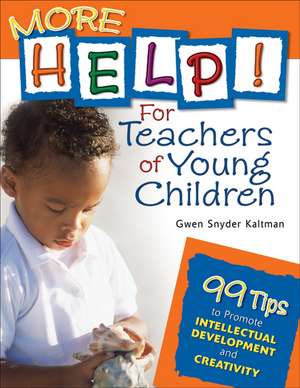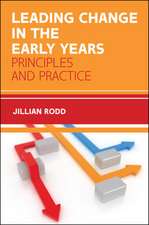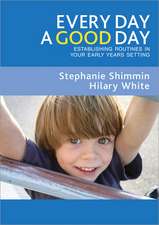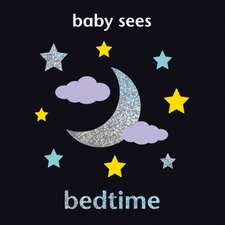More Help! For Teachers of Young Children: 99 Tips to Promote Intellectual Development and Creativity
Autor Gwendolyn S. Kaltmanen Limba Engleză Paperback – 20 dec 2005
'The book gives a variety of good examples of real life situations teachers encounter daily in their classrooms. . . There are many books with early childhood education curriculum activities but not many with specific strategies for everyday needs. . . The examples and stories show humor and a good knowledge of what are appropriate child development practices' - Kathleen McGinn, Director, Child Development Programs, Colton Joint Unified School District, California
Engage and grow young minds with strategies for play-based curriculum!
Early childhood educators face a perpetual challenge: How do you develop children's early academic skills in stimulating, developmentally appropriate, and culturally responsive ways? Recognizing that play is children's work, this friendly resource offers 99 hands-on and often humorous tips to prepare diverse children for school.
More Help! For Teachers of Young Children provides readers with entertaining stories and practical strategies to create learning opportunities for early literacy, math, science, art, social studies, music, and movement.
Each tip offers:
- A short and engaging real-life story
Suggestions which teachers can try out in their classrooms right away
- "Ask Yourself" questions for teachers to think about their classroom practice
- A "Try This" section at the end of each chapter gives readers even more activity ideas for working with children ages 2-5.
Both new and experienced early years teachers will learn and laugh each time they open this inviting resource and its companion volume, Help! For Teachers of Young Children: 88 Tips to Develop Children's Social Skills and Create Positive Teacher-Family Relationships.
| Toate formatele și edițiile | Preț | Express |
|---|---|---|
| Paperback (1) | 285.04 lei 43-57 zile | |
| SAGE Publications – 20 dec 2005 | 285.04 lei 43-57 zile | |
| Hardback (1) | 448.19 lei 43-57 zile | |
| SAGE Publications – 20 dec 2005 | 448.19 lei 43-57 zile |
Preț: 285.04 lei
Nou
Puncte Express: 428
Preț estimativ în valută:
54.57€ • 56.12$ • 45.27£
54.57€ • 56.12$ • 45.27£
Carte tipărită la comandă
Livrare economică 17 februarie-03 martie
Preluare comenzi: 021 569.72.76
Specificații
ISBN-13: 9781412924450
ISBN-10: 1412924456
Pagini: 232
Dimensiuni: 216 x 279 x 13 mm
Greutate: 0.58 kg
Ediția:1
Editura: SAGE Publications
Colecția Corwin
Locul publicării:Thousand Oaks, United States
ISBN-10: 1412924456
Pagini: 232
Dimensiuni: 216 x 279 x 13 mm
Greutate: 0.58 kg
Ediția:1
Editura: SAGE Publications
Colecția Corwin
Locul publicării:Thousand Oaks, United States
Recenzii
"Emphasizes doing what is best for the child based on sound principles of how young children learn. It is not a ‘recipe’ book as many others are."
"The book gives a variety of good examples of real life situations teachers encounter daily in their classrooms . . . There are many books with early childhood education curriculum activities but not many with specific strategies for everyday needs . . . The examples and stories show humor and a good knowledge of what are appropriate child development practices."
"Contains many gems. Gives hands–on examples that will surely stimulate many teachers to help their students appreciate diversity and become more comfortable with peers who sound, look, behave, or learn in a different manner. This information alone may be worth the cost of the book for many teachers."
"The focus is on the children, following their interests, and creating an environment that supports their creativity. The book is filled with practical, use-it-today activities that can make a difference in the learning atmosphere in classrooms."
"The book gives a variety of good examples of real life situations teachers encounter daily in their classrooms . . . There are many books with early childhood education curriculum activities but not many with specific strategies for everyday needs . . . The examples and stories show humor and a good knowledge of what are appropriate child development practices."
"Contains many gems. Gives hands–on examples that will surely stimulate many teachers to help their students appreciate diversity and become more comfortable with peers who sound, look, behave, or learn in a different manner. This information alone may be worth the cost of the book for many teachers."
"The focus is on the children, following their interests, and creating an environment that supports their creativity. The book is filled with practical, use-it-today activities that can make a difference in the learning atmosphere in classrooms."
Cuprins
Preface
Acknowledgments
About the Author
Introduction: Preparing for Life Through Play
1. "What Should We Do Next Week?" Creating Developmentally Appropriate Lesson Plans and an Environment That Supports Your Curriculum
1. Plan activities for large and small motor development
2. Role model curiosity and enthusiasm.
3. Select activities and materials that are relevant to the young child.
4. Let the children’s interest level determine when it is time to move on to another subject.
5. Share lesson plans and goals with your staff.
6. Create developmentally appropriate lesson plans that stimulate but do not overwhelm the children.
7. Make plans that are responsive to the children’s sense of time.
8. Let the child decide how long to stay at an activity.
9. Help children through transitions by giving them advance notice before changing activities.
10. Give children the freedom to explore their environment.
11. Provide a good physical environment with privacy zones.
12. Supply hands on materials.
13. Modify the environment to keep it engaging.
14. Display and rotate interesting pictures in your room.
15. Provide a clean and healthy environment for the children.
TRY THIS
2. “Won't You Be My Neighbor?" Using Social Studies to Help Children Learn About Their Community and to Cherish Diversity
16. Create an atmosphere of respect and consideration for others.
17. Be nonjudgmental and accepting of different families.
18. Help children develop positive attitudes toward diversity.
19. Use music, games and stories to help children appreciate diversity
20. Learn about your school community.
21. Design events and activities that involve other classes.
22. Invite guests to the classroom.
23. Use dramatic play to help children learn about people in your community.
24. Prepare for field trips.
25. Support the inclusion of children with special needs.
26. Arrange for children with special needs to participate as much as possible in all activities.
TRY THIS
3. To, Too, Two, Tutu: Providing an Environment and Experiences That Promote Literacy
27. Read to children frequently, regardless of their age.
28. Enrich your book corner.
29. Provide activities that help children develop visual discrimination.
30. Provide an environment that is rich with letters.
31. Display charts and pictures at the children’s eye level.
32. Print letters in a consistent manner.
33. Create opportunities for children to read and write their names.
34. Encourage reading and writing everywhere.
35. When a child shows an interest in letters, help her take the next step.
36. Create activities that involve letter recognition.
37. Help children develop phonological awareness by making the connection between letters and sounds.
38. Play games that involve phonics.
39. Develop comprehension skills by asking thoughtful questions.
40. Create original books for the children to read.
41. Encourage children to create their own books.
TRY THIS
4. "Once Upon a Time. . .": Story/Group Time With the Young Child
42. Keep group time interesting.
43. Use props or songs to attract the children.
44. Start your story promptly.
45. Sit where all the children can see you and make individual eye contact.
46. Be aware of what is going on behind you.
47. Put on a show at story time.
48. Tell, don’t read, flannel board stories.
49. Create original flannel board stories.
50. Choose books that are developmentally appropriate to read to a group.
51. Don’t hesitate to modify the story to fit your group.
TRY THIS
5. Nevermind the Answer, It's the Question That Matters: Exploring Science Should Be an Adventure
52. Ask leading questions that encourage children to think and wonder.
53. Recognize and build on a child’s natural curiosity.
54. Provide interesting materials for children to handle, classify and order.
55. Help develop observation and logical reasoning skills.
56. Teach some basic principles of physics.
57. Help children explore sound.
58. Help children discover basic properties of light.
59. Simplify scientific tools for the children to use.
60. Observe and study natural phenomena outdoors.
61. Create opportunities for children to observe living things in their natural environment.
62. Bring animals, plants and scientific equipment into your classroom.
63. Set up science experiments.
64. Teach respect and care for the environment.
TRY THIS
6. "How Many Cookies Do You Want?" Teaching Mathematics Relevant to Young Children
65. Help children understand one-to-one correspondence.
66. Provide meaningful mathematical experiences.
67. Make mathematics an integral part of classroom activities.
68. Turn the calendar into a mathematical learning tool.
69. Create simple graphs.
70. Develop activities that involve pattern recognition.
71. Use measuring tools to create mathematical learning opportunities.
72. Create games and activities involving mathematics.
73. Provide opportunities for children to make estimates.
74. Use flannel board number songs to teach mathematical concepts.
75. Encourage activities that explore mathematical relationships and geometry.
TRY THIS
7. Creativity Is an Attitude, Not an Art Project: Opening Your Mind to Children’s Creativity
76. Use props to stimulate creative thinking.
77. When you ask open-ended questions, value the children’s responses.
78. Provide open-ended materials.
79. Encourage children to use materials in unconventional ways.
80. Limit the use of worksheets and patterns.
81. When doing art projects provide a generous supply of materials.
82. Value the process more than the product.
83. Resist the temptation to label a child’s artwork.
84. Be aware of how you can inadvertently inhibit children’s creativity.
85. Accept the child’s artistic interpretation.
86. Provide art experiences in different locations.
87. Provide an environment that fosters creativity.
TRY THIS
8. March to a Different Drummer: Using Music and Creative Movement to Enhance Children’s Learning
88. Use background music sparingly.
89. Be willing to sing.
90. Use singing and creative movement to make transitions easier.
91. Select simple songs to teach the children.
92. Create original songs.
93. Use musical activities and finger plays to teach sequence and letter recognition.
94. Use props to encourage creative movement.
95. Minimize the use of commercially produced activity tapes.
96. When doing creative movement encourage children to come up with their own interpretations.
97. Do not limit creative movement to a circle pattern.
98. Control the pace of creative movement activities.
99. Vary the use of musical instruments.
TRY THIS
Afterword
Resources
Suggested Readings
Acknowledgments
About the Author
Introduction: Preparing for Life Through Play
1. "What Should We Do Next Week?" Creating Developmentally Appropriate Lesson Plans and an Environment That Supports Your Curriculum
1. Plan activities for large and small motor development
2. Role model curiosity and enthusiasm.
3. Select activities and materials that are relevant to the young child.
4. Let the children’s interest level determine when it is time to move on to another subject.
5. Share lesson plans and goals with your staff.
6. Create developmentally appropriate lesson plans that stimulate but do not overwhelm the children.
7. Make plans that are responsive to the children’s sense of time.
8. Let the child decide how long to stay at an activity.
9. Help children through transitions by giving them advance notice before changing activities.
10. Give children the freedom to explore their environment.
11. Provide a good physical environment with privacy zones.
12. Supply hands on materials.
13. Modify the environment to keep it engaging.
14. Display and rotate interesting pictures in your room.
15. Provide a clean and healthy environment for the children.
TRY THIS
2. “Won't You Be My Neighbor?" Using Social Studies to Help Children Learn About Their Community and to Cherish Diversity
16. Create an atmosphere of respect and consideration for others.
17. Be nonjudgmental and accepting of different families.
18. Help children develop positive attitudes toward diversity.
19. Use music, games and stories to help children appreciate diversity
20. Learn about your school community.
21. Design events and activities that involve other classes.
22. Invite guests to the classroom.
23. Use dramatic play to help children learn about people in your community.
24. Prepare for field trips.
25. Support the inclusion of children with special needs.
26. Arrange for children with special needs to participate as much as possible in all activities.
TRY THIS
3. To, Too, Two, Tutu: Providing an Environment and Experiences That Promote Literacy
27. Read to children frequently, regardless of their age.
28. Enrich your book corner.
29. Provide activities that help children develop visual discrimination.
30. Provide an environment that is rich with letters.
31. Display charts and pictures at the children’s eye level.
32. Print letters in a consistent manner.
33. Create opportunities for children to read and write their names.
34. Encourage reading and writing everywhere.
35. When a child shows an interest in letters, help her take the next step.
36. Create activities that involve letter recognition.
37. Help children develop phonological awareness by making the connection between letters and sounds.
38. Play games that involve phonics.
39. Develop comprehension skills by asking thoughtful questions.
40. Create original books for the children to read.
41. Encourage children to create their own books.
TRY THIS
4. "Once Upon a Time. . .": Story/Group Time With the Young Child
42. Keep group time interesting.
43. Use props or songs to attract the children.
44. Start your story promptly.
45. Sit where all the children can see you and make individual eye contact.
46. Be aware of what is going on behind you.
47. Put on a show at story time.
48. Tell, don’t read, flannel board stories.
49. Create original flannel board stories.
50. Choose books that are developmentally appropriate to read to a group.
51. Don’t hesitate to modify the story to fit your group.
TRY THIS
5. Nevermind the Answer, It's the Question That Matters: Exploring Science Should Be an Adventure
52. Ask leading questions that encourage children to think and wonder.
53. Recognize and build on a child’s natural curiosity.
54. Provide interesting materials for children to handle, classify and order.
55. Help develop observation and logical reasoning skills.
56. Teach some basic principles of physics.
57. Help children explore sound.
58. Help children discover basic properties of light.
59. Simplify scientific tools for the children to use.
60. Observe and study natural phenomena outdoors.
61. Create opportunities for children to observe living things in their natural environment.
62. Bring animals, plants and scientific equipment into your classroom.
63. Set up science experiments.
64. Teach respect and care for the environment.
TRY THIS
6. "How Many Cookies Do You Want?" Teaching Mathematics Relevant to Young Children
65. Help children understand one-to-one correspondence.
66. Provide meaningful mathematical experiences.
67. Make mathematics an integral part of classroom activities.
68. Turn the calendar into a mathematical learning tool.
69. Create simple graphs.
70. Develop activities that involve pattern recognition.
71. Use measuring tools to create mathematical learning opportunities.
72. Create games and activities involving mathematics.
73. Provide opportunities for children to make estimates.
74. Use flannel board number songs to teach mathematical concepts.
75. Encourage activities that explore mathematical relationships and geometry.
TRY THIS
7. Creativity Is an Attitude, Not an Art Project: Opening Your Mind to Children’s Creativity
76. Use props to stimulate creative thinking.
77. When you ask open-ended questions, value the children’s responses.
78. Provide open-ended materials.
79. Encourage children to use materials in unconventional ways.
80. Limit the use of worksheets and patterns.
81. When doing art projects provide a generous supply of materials.
82. Value the process more than the product.
83. Resist the temptation to label a child’s artwork.
84. Be aware of how you can inadvertently inhibit children’s creativity.
85. Accept the child’s artistic interpretation.
86. Provide art experiences in different locations.
87. Provide an environment that fosters creativity.
TRY THIS
8. March to a Different Drummer: Using Music and Creative Movement to Enhance Children’s Learning
88. Use background music sparingly.
89. Be willing to sing.
90. Use singing and creative movement to make transitions easier.
91. Select simple songs to teach the children.
92. Create original songs.
93. Use musical activities and finger plays to teach sequence and letter recognition.
94. Use props to encourage creative movement.
95. Minimize the use of commercially produced activity tapes.
96. When doing creative movement encourage children to come up with their own interpretations.
97. Do not limit creative movement to a circle pattern.
98. Control the pace of creative movement activities.
99. Vary the use of musical instruments.
TRY THIS
Afterword
Resources
Suggested Readings
Notă biografică
Gwen Snyder Kaltman has spent more than 25 years working with young children, their parents, and teachers. She is the author of Help! For Teachers of Young Children: 88 Tips to Develop Children¿s Social Skills and Create Positive Teacher-Family Relationships and More Help! For Teachers of Young Children: 99 Tips to Promote Intellectual Development and Creativity. She has been a preschool teacher, director, college instructor, and educational trainer in various parts of the country and has also been a validator for the National Academy of Early Childhood Programs, the accreditation division of the National Association for the Education of Young Children.
Kaltman has worked with young children in Connecticut, Delaware, Georgia, Maryland, Massachusetts, New York, Tennessee, and Virginia. She has trained teachers working in Head Start programs in Chattanooga, Tennessee, and rural Georgia and in child care centers and preschools in the suburbs of New York City and Washington, DC. She has observed preschool classes in such diverse places as China, Easter Island, Greenland, India, Malta, Mongolia, Tibet, Tanzania, Venezuela, and native villages above the Arctic Circle and along the Amazon and Sepik rivers.
She earned her BS and MEd in early childhood education from the University of Maryland.
Kaltman has worked with young children in Connecticut, Delaware, Georgia, Maryland, Massachusetts, New York, Tennessee, and Virginia. She has trained teachers working in Head Start programs in Chattanooga, Tennessee, and rural Georgia and in child care centers and preschools in the suburbs of New York City and Washington, DC. She has observed preschool classes in such diverse places as China, Easter Island, Greenland, India, Malta, Mongolia, Tibet, Tanzania, Venezuela, and native villages above the Arctic Circle and along the Amazon and Sepik rivers.
She earned her BS and MEd in early childhood education from the University of Maryland.
Descriere
Includes 99 ready-to-use tips to build early skills in literacy, math, science, social studies, creativity, music, and movement. For teachers of children ages 2-5.










